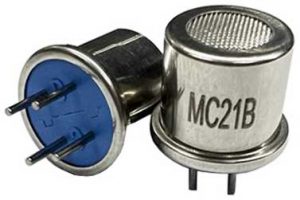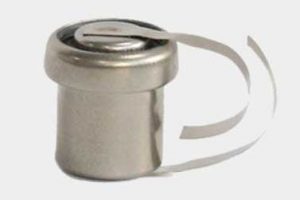How to Improve the Stability of Sensor-Sensor Housings Manufacturer
In modern industrial production, scientific research and daily life, sensors are an indispensable part. For example, in the automated production process, sensors are used to monitor and control various parameters in the production process, to ensure that the equipment is working in normal state or the best state, and to achieve the best quality of products.
The sensor converts the specific measured signal into a certain usable signal. And then outputs it according to a certain law through the sensitive element. And the conversion element to meet the requirements of information transmission, processing, recording, display and control.
Ways to Improve Sensor’s Stability
Improving sensor stability is a comprehensive process that involves multiple considerations. Here are some of the main methods and suggestions:
Select high-quality Sensor Components
Select sensor components with high precision, high stability and good anti-interference ability. These components usually use advanced manufacturing processes and materials, which can reduce the impact of internal errors and external interference on the measurement results.
Optimize Hardware Design
Strengthen hardware design, such as optimizing circuit design, adding filters, error correction and signal gain, to improve sensor stability and accuracy.
For certain types of sensors, such as Hall position sensors, it is necessary to optimize the magnetic field design to ensure a uniform and gradient-stable magnetic field environment.
Reasonable layout and installation method
The layout and installation method of the sensor have an important impact on the measurement accuracy and stability. A reasonable layout can reduce interference and mutual influence between sensors, thereby improving the overall measurement accuracy.
When installing the sensor, it is necessary to ensure good contact between the sensor and the object being measured to avoid unnecessary errors. At the same time, it is also necessary to consider the fixing method of the sensor to ensure that it remains stable during operation.
Regular Calibration and Maintenance
During use, the sensor may be affected by factors such as the environment and usage conditions, resulting in performance degradation or errors. Therefore, regular calibration and maintenance of the sensor is an important measure to ensure its stability.
During the calibration process, standard equipment is required to accurately measure the sensor and adjust the sensor parameters based on the measurement results. In addition, compensation algorithms can be used to correct problems such as sensor nonlinear errors and temperature drift.
Reducing Noise and Interference
Sensors are sensitive to environmental noise and electromagnetic interference. So reducing noise and interference is the key to improving sensor stability. The impact of noise and interference can be reduced by adding filters and using electromagnetic shielding.
Considering Environmental Factors
The working environment of the sensor has a great impact on its stability. For example, harsh environments such as high temperature, cold and humidity, and dust may damage the sensor. Therefore, when selecting sensors and designing, it is necessary to consider environmental factors fully and take corresponding protective measures.
Adopting Multi-sensor Fusion Technology
By integrating multiple sensors and fusing their information, the advantages of each sensor can be fully utilized to make up for the shortcomings of a single sensor. Multi-sensor fusion technology can not only improve measurement accuracy but also enhance the robustness and reliability of the system.
In conclusion, enhancing sensor stability encompasses several key elements. These include the selection of high-quality sensor components, optimization of hardware design, thoughtful layout and installation methods, regular calibration and maintenance, noise and interference reduction, consideration of environmental factors, and the implementation of multi-sensor fusion technology. The comprehensive implementation of these measures can significantly enhance the stability and dependability of the sensor.
How to Choose Sensor Components

When selecting sensor components, multiple factors need to be considered to ensure that the selected components can meet the needs of specific applications. Here are some key steps and considerations:
- Clear Measurement Object and Measurement Environment
The first task is to clarify the physical quantity to be measured (such as temperature, pressure, displacement, light intensity, etc.). And the measurement environment (such as temperature range, humidity, vibration, etc.). This will directly affect the selection of sensor components.
- Determine the measurement range and accuracy requirements
Determine the required measurement range and accuracy based on application requirements. The range of the sensor element should cover the required measurement range and have sufficient accuracy to meet application requirements. At the same time, the performance parameters of the sensor element, such as linearity, hysteresis, and repeatability, also need to be considered.
- Consider the Impact of Environmental Factors
Sensor elements may be affected by environmental factors such as temperature, humidity, and electromagnetic interference during operation. Therefore, when selecting sensor elements, it is necessary to consider their ability to resist environmental interference and select appropriate protection levels and packaging methods.
- Analyze Cost and Availability
– Cost is an important consideration when selecting sensor elements. The prices of sensor elements of different types and specifications vary greatly and need to be weighed according to budget and application requirements. At the same time, the availability and delivery time of sensor elements also need to be considered to ensure that the required components can be obtained in a timely manner.
- Consult Relevant Materials and Reference Cases
– When selecting sensor elements, you can consult relevant technical materials, product manuals. And reference cases to understand the performance characteristics and application range of different sensor elements. This will help to select sensor elements suitable for specific applications more accurately.
- Perform Actual Testing and Verification
– When possible, performing actual testing and verification is an effective way to select sensor elements. By testing the performance and stability of sensor elements in the actual working environment, it is possible to assess whether they meet the application requirements more accurately.
- Consider Subsequent Maintenance and Calibration
– Sensor elements may require maintenance and calibration during use. When selecting sensor elements, it is necessary to consider the difficulty and cost of their maintenance and calibration. Selecting sensor elements that are easy to maintain and calibrate will reduce the workload and cost of subsequent maintenance and calibration.
Different types of sensor elements have specific selection criteria. For instance, when choosing temperature sensors, options include thermocouples, thermal resistors (RTDs), thermistors, or infrared temperature sensors. Similarly, for pressure sensors, one can choose from strain gauges, piezoresistive, capacitive, or piezoelectric elements. Selection should be based on the particular application requirements and the considerations mentioned above.
